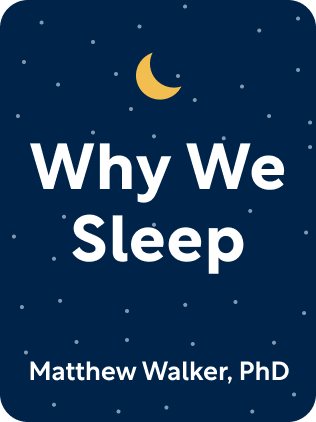

This article is an excerpt from the Shortform summary of "Why We Sleep" by Matthew Walker. Shortform has the world's best summaries of books you should be reading.
Like this article? Sign up for a free trial here .
What is somnambulism? What causes somnambulism, and who is most likely to have it?
When you first think, “What is somnambulism?”, you may not think of sleepwalking. But that’s what it is—a well-known sleep disorder. Somnambulism is more common in children and adults. Read more to find out the answer to what somnambulism is and more.
What Is Somnambulism / Sleepwalking
What is somnambulism? Sleepwalking is the act of walking and performing other behaviors while asleep. Automatic, nonconscious routines are executed, like brushing teeth or opening the refrigerator.
Sleepwalking happens during NREM sleep, and not REM dreaming sleep (like some think). Neurologically, sleepwalking is accompanied by an unexpected spike in nervous system activity, causing the person to be stuck somewhere between sleep and wakefulness.
Sleepwalking is more common in children than adults, for unknown reasons – but what causes sleepwalking? One possible theory is because kids spend more time in NREM sleep than adults do.
In one of the most extreme cases, a sleepwalker drove 14 miles to an in-laws’ home, stabbed the mother-in-law to death, and strangled the father-in-law (who survived). This person was later acquitted as not being control of his actions. This defense has been tried in later cases (most unsuccessfully). And it didn’t answer what causes somnambulism.
Childhood Sleep and Sleepwalking
What is somnambulism in childhood? While starting with very irregular sleep, babies eventually show more regular sleep patterns starting at 4 months, as their suprachiasmatic nucleus and circadian rhythm develop.
With age, total time sleeping decreases, and the fraction of REM sleep decreases. Now that the synaptogenesis of REM tapers off, NREM plays a larger role in brain refinement, pruning the associations that are most valuable unique to that child’s life.
Consider NREM to actually cause cognitive development – changes in deep NREM sleep precede cognitive milestones, and the last maturation is in the frontal lobe, dealing with rationality.
What is somnambulism’s relationships to caffeine? Caffeine exposure during childhood could reduce NREM sleep, delaying brain maturation and learning, though it’s unclear if any of these factors contribute to what causes sleepwalking.
What Is Somnambulism and Its Relationship to Sleep Cycles?
Now you understand how your sleep rhythm gives a regular schedule of sleep from night to night. Next, we’ll look into how, within a single night of sleep, your brain cycles between different types of phases of sleep. This is important to understanding the function of sleep for your brain. Understanding your brain during sleep may give you a hint about what causes sleepwalking if you do sleepwalk.
In summary, your brain switches between two types of sleep – REM (rapid eye movement) and non-REM (NREM) sleep. The two types of sleep have different functions – simplistically:
- NREM clears out old memories and mental “trash,” and moves information into long-term storage.
- REM strengthens the valuable connections that remain, and it forges creative novel connections.
In total for a single night, there’s about an 80/20 split between NREM/REM sleep.
When you sleep, your brain goes through sleep cycles that each last about 90 minutes. Each sleep cycle generally begins with NREM sleep, then ends with REM sleep. As one cycle ends, the next begins. You can see this in a sleep graph here:
How Sleep Cycles Change Through the Night
Notice that not all sleep cycles look the same. As the sleep progresses through the night, a greater fraction of each cycle is spent in REM sleep.
Why would the sleep cycles be unbalanced in this way? Why not just have all sleep cycles look the same, with 80% in NREM and 20% in REM?
The author hypothesizes that it’s like making a sculpture out of a mass of clay. Earlier in the night, more NREM is needed to clear out junk memories that aren’t useful anymore. Then once only the useful stuff remains, REM strengthens what’s left. But what is somnambulism’s purposes in sleep, and what causes somnambulism?
(Shortform note: One way to think about this is that an animal might be interrupted in the middle of the night. So if an animal could only sleep 3 hours in one night, it’d make sense for the more critical functions to be performed first, with the later functions being a luxury if the animal could sleep a full night. This may suggest that NREM performs a more vital function for survival.)
Also beware of what this means for cutting your sleep short. If you normally sleep 8 hours, and one night you have to cut sleep to 6 hours, then you’re not just losing 25% of sleep – you might be losing 60-90% of your REM sleep!
Likewise, going to sleep later than usual might cut short your NREM sleep.
Now you know the answer to the question of what is somnambulism. Sleepwalking is not uncommon, but it isn’t as widespread as other sleep disorders, like insomnia. If you or someone you know has somnambulism, consult with a medical professional.

———End of Preview———
Like what you just read? Read the rest of the world's best summary of Matthew Walker's "Why We Sleep" at Shortform .
Here's what you'll find in our full Why We Sleep summary :
- Why you need way more sleep than you're currently getting
- How your brain rejuvenates itself during sleep, and why nothing can substitute for sleep
- The 11-item checklist to get more restful sleep today






